What next for Sizewell B after 30-year milestone?
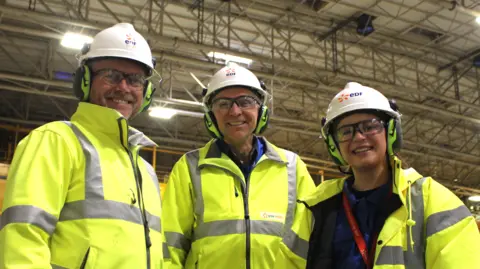 George King/BBC
George King/BBCIt is 30 years since Sizewell B Power Station generated its first watt of low-carbon electricity.
The plant, near Leiston, Suffolk, first synchronised with the national grid in February 1995 and continues to provide energy to more than two million homes, producing 3% of the UK's energy.
Ahead of its construction, it faced similar opposition to that faced by its potential neighbour, Sizewell C. What does the future of Sizewell B look like?
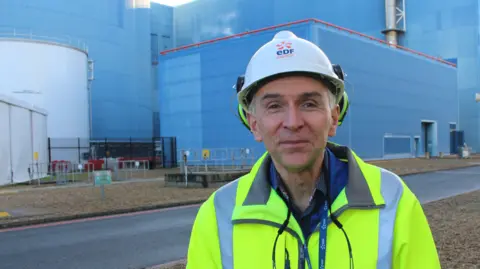 George King/BBC
George King/BBC"We're currently due to close in 2035, but we plan to take the station life out to 2055 if we can," said Robert Gunn, station director at Sizewell B.
"I think this is a fantastic time for nuclear power and we are calling it a bit of a renaissance period."
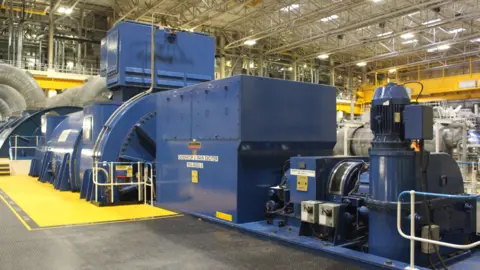 George King/BBC
George King/BBCWith a view to safeguarding its longevity, Sizewell B recently went offline while £75m worth of improvement works were carried out.
During the outage, 15,000 separate pieces of work across 1,500 parts of the station were conducted, with divers being sent off the coast to inspect the plant's intake pipe.
"Nuclear power has been generated safely on the Suffolk coast since the 1960s, through Sizewell A and then Sizewell B," added Mr Gunn.
"And, eventually, we will move on to Sizewell C down the road.
"But, looking forward [at Sizewell B], we continue to invest a lot in the plant and plan to deliver another 18 months of non-stop generation."
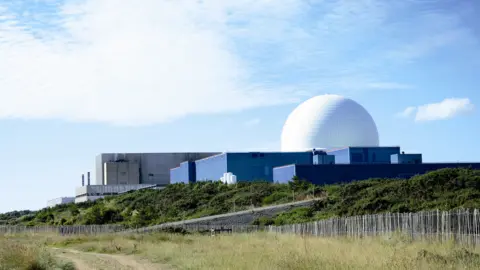 EDF
EDF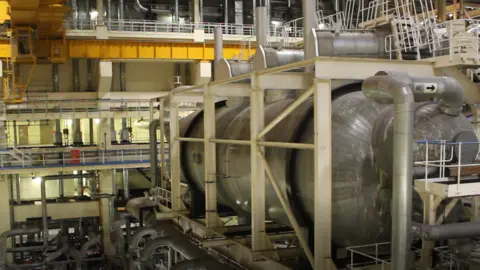 George King/BBC
George King/BBCEDF, which runs the plant, claims Sizewell B has produced enough energy since 1995 to meet the needs of every home in Suffolk for nearly 200 years, or every home in East Anglia for about 90 years.
Doing so, however, is "obviously quite a complicated thing", said Mr Gunn.
How does it all work?
The plant uses nuclear fission to split atoms, the process of which then heats up highly pressurised water.
This then spins Sizewell's large turbines at 3,000 turns a minute, said Mr Gunn, creating power that is then turned into the very electricity used to heat and light homes.
Following in its footsteps could be Sizewell C, in which the government has an 85% stake. It is predicted to be complete by 2031.
The plant will use twin reactors generating 3.2 gigawatts of electricity to provide energy for about six million homes for 60 years. The project will also support up to 70,000 jobs.
But funding needed to get it over the line is still yet to be agreed, although Downing Street has pledged £5.5bn towards development work.
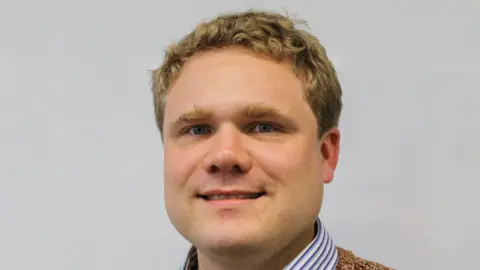 Supplied
SuppliedDr Thomas Haynes, a lecturer in nuclear engineering at the University of East Anglia, believed projects like Sizewell would eventually move to using small modular reactors to save money.
"It's a really exciting time for nuclear in the UK but in East Anglia in particular, with these large, new baseload power stations like Sizewell C," he said.
"But the financial difficulties [of building a power station], I think, are more than the technical difficulties or the public acceptance of nuclear power.
"A lot of the cost of financing a nuclear facility comes before you turn it on, but smaller reactors have the ability to follow demand a lot more and are better economically."
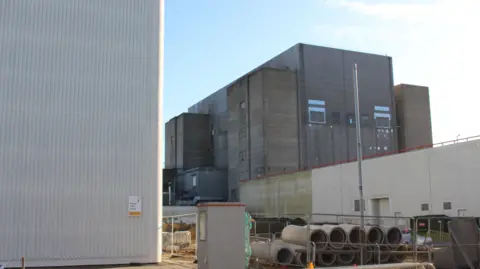 George King/BBC
George King/BBC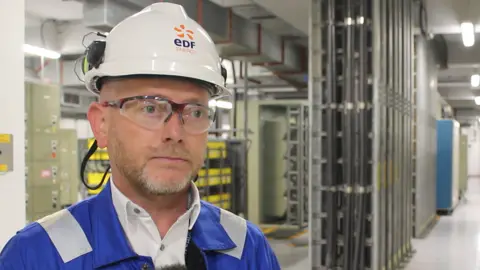 George King/BBC
George King/BBCWork on the construction of Sizewell B started in 1987 before operations officially launched on Valentine's Day in 1995.
Currently, just over 620 EDF staff and about 300 contractors work there.
Gavin Rousseau, 50, who first joined the plant in 1991, said he "saw the power station grow literally from the ground up".
He initially worked as a maintenance apprentice before moving through the ranks to become plant manager.
During that time, he said "the station design itself hasn't really changed".
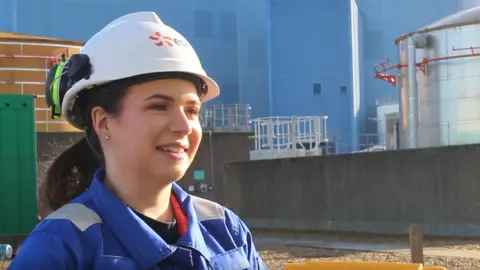 George King/BBC
George King/BBCOperations engineer Jessica Willett, 22, said working at the plant had helped her confidence grow and the gender balance, despite the world of engineering still being male-dominated, was improving.
"[The issue is] not going to go away any time soon, but there are more women coming into the field and a range of different people from different backgrounds," she said.
"Over the last 30 years [Sizewell B has] achieved so much and had so many different people come through, but it's really important to get people interested from a young age."
 George King/BBC
George King/BBC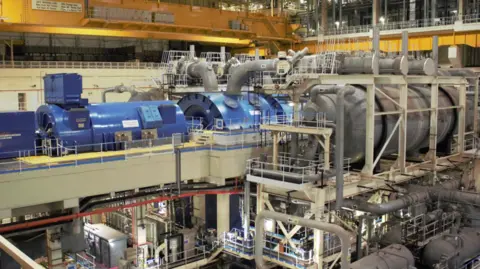 George King/BBC
George King/BBCMany though are critical of the role of nuclear energy in the UK.
Chris Wilson, from the campaign group Together Against Sizewell C, said: "Sizewell B can only be considered successful if you ignore the evidence.
"Nuclear is not clean, homegrown, nor sustainable - it's expensive and doesn't provide energy security.
"What EDF and the nuclear industry have been really good at is greenwashing its activities and gaslighting the British public."
'Evidence is clear'
A spokesperson for EDF said: "Sizewell B was built by British talent and has been operated ever since by Suffolk talent."
He said it had brought more than "£15bn of economic benefit to the nation" since generation started in 1995, and saved 123 million tonnes of CO2 emissions".
"The evidence clearly shows that the UK has massively benefitted from Sizewell B," said the spokesperson.
Follow Suffolk news on BBC Sounds, Facebook, Instagram and X.
